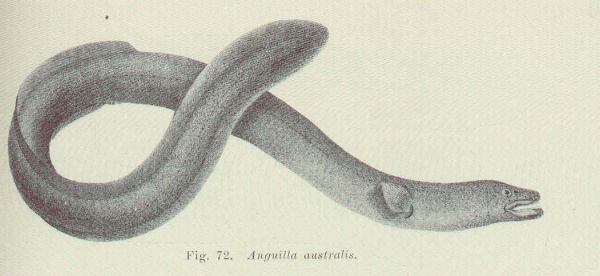Facts About Short-finned eel
The short-finned eel, also known as the shortfin eel, is a compelling species native to southeastern Australia, New Zealand, and various South Pacific regions. Belonging to the Anguillidae family, these eels are easily identifiable by their elongated, snake-like bodies, small heads, and evenly proportioned dorsal and anal fins. Their coloration varies from deep olive-green to golden, and they can grow up to 90 cm (about 3 feet) in length and weigh around 3 kg (6.6 pounds). Female eels typically take between 15 to 30 years to reach maturity.
Short-finned eels inhabit lakes, dams, and coastal rivers, particularly in the lowland areas of New Zealand and along the coasts of Australia. They exhibit a distinctive catadromous migration pattern, involving downstream migration to the sea to spawn in the deep waters off New Caledonia. The larvae, known as glass eels, eventually return to coastal waters and then migrate upstream to settle in freshwater habitats.
Eel farming has undergone various advancements, making it a more viable option today. With the decline in wild eel populations, particularly due to reduced recruitment of juvenile eels, aquaculture has gained significance. However, the industry still faces challenges, particularly in regulating reproduction and larval development in farm environments.
Short-finned eels are highly valued for their flavor and have been an essential food source for many cultures, including the Gunditjmara people of Australia and the Māori of New Zealand. Global demand, especially in markets like Japan, has driven the growth of eel aquaculture to meet consumer needs. Sustainability remains a key concern in these operations, with efforts focused on improving production efficiency and maintaining viable seed sources.
